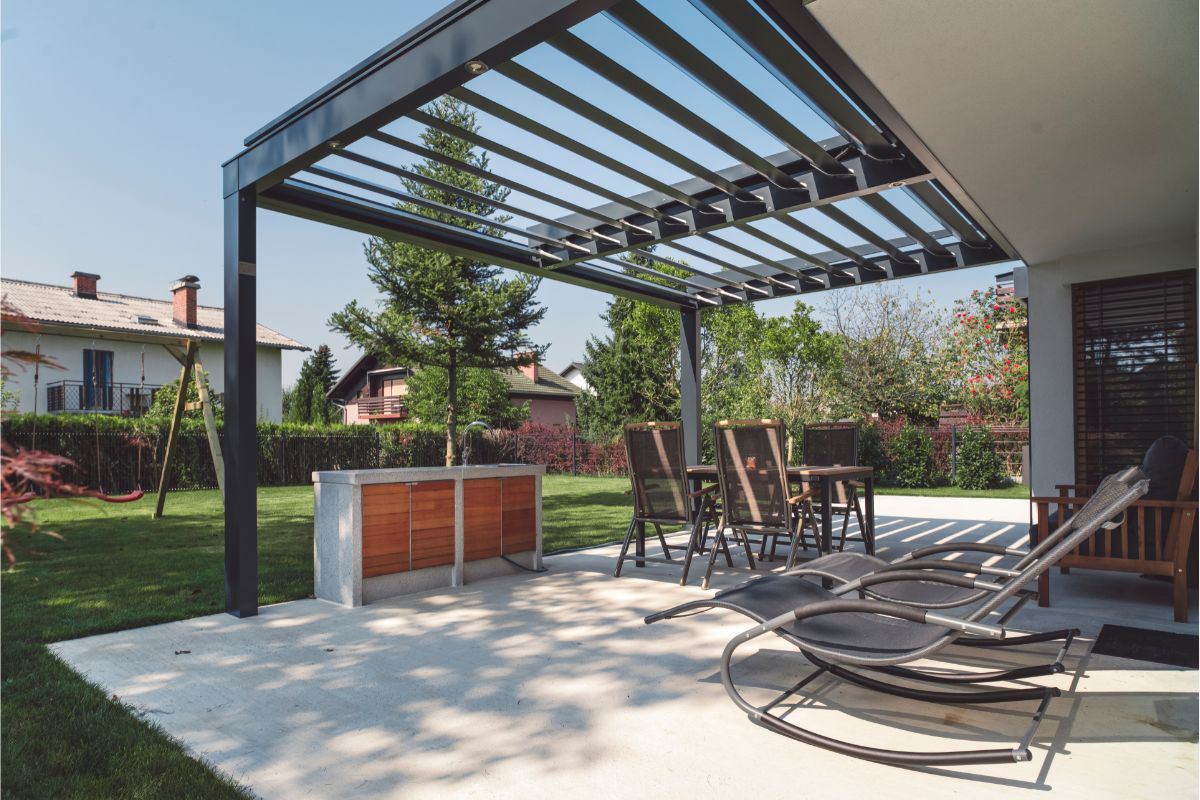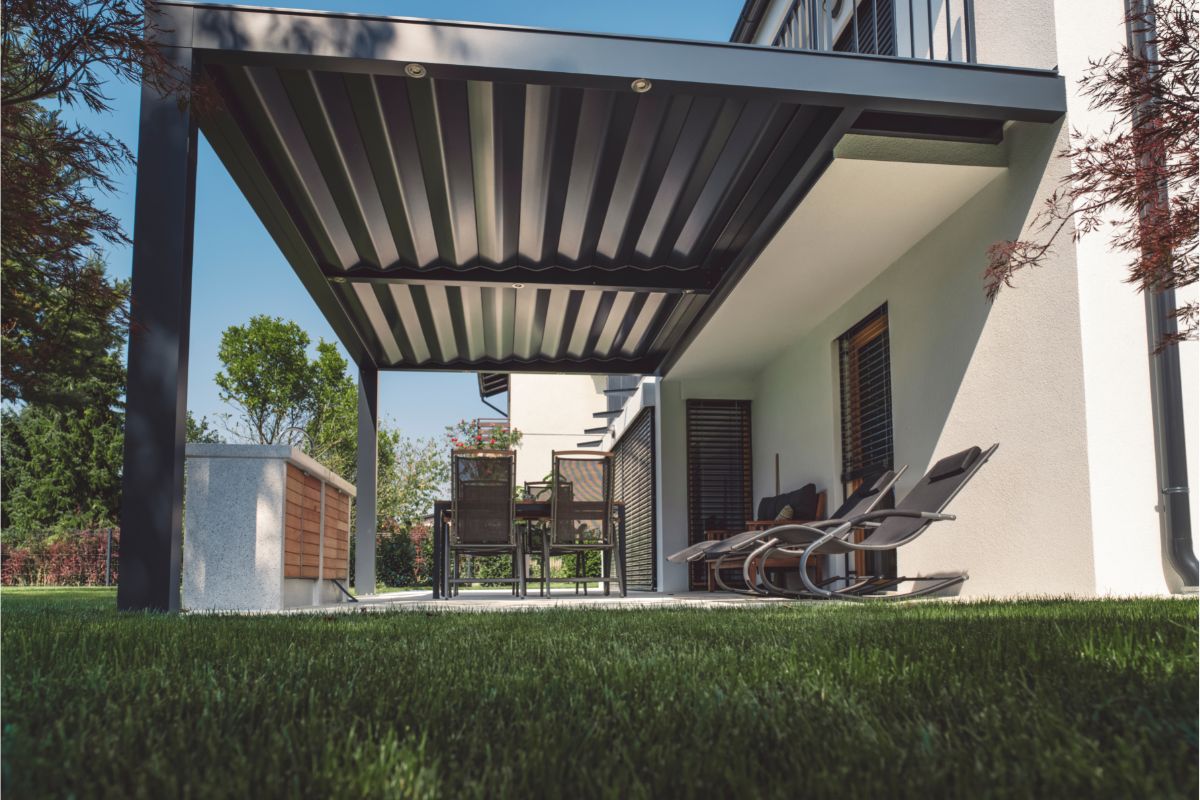If you’re considering adding a structure to your garden or backyard for shelter, decoration, or both, you’ve probably done some research into your options. One of the structures you might have come across is called a pergola.

Many people confuse pergolas with arbors or gazebos, and while these structures have a lot of similarities, there are also differences you should be aware of before buying or building.
Today, we will be explaining what a pergola is, how it differs from other similar garden structures, and everything else you need to know/
What Is A Pergola?
At its core, a pergola is a structure designed to stand outdoors on a permanent basis. It’s made of several columns which support a grid roof consisting of rafters and beams.
This roof can either be covered to provide shelter from the rain, or it can remain uncovered depending on your preference.
Some people will build pergolas attached to their homes, but it’s also common for pergolas to be freestanding.
The History Of The Pergola
The earliest pergola ever found has been traced back to about 1400 BC and it’s thought that the first ever pergola was built for Thebes’ high court official in Egypt.
So, while these structures have experienced a resurgence in recent years, these garden shelters have been around for many centuries.
The word ‘pergola’ is rooted in the Latin word, ‘pergula’, which translates to ‘projecting eave’. Since an eave is an overhanging roof, this means that the pergola is named after the shape of its roof.
Historians think that pergolas were used for protection from the sun by the ancient Egyptians, and their use was continued by the Romans during the 17th-century Renaissance, except the Roman versions were made of stone rather than wood.
During the 18th and 19th centuries, pergolas became less popular, but during the 20th century, the British Arts and Crafts Movement led to a resurgence of these structures.
This time, they were used as supports for plants such as wisteria, and were seen as decorative garden structures rather than practical shelter for the most part.
What Is The Purpose Of A Pergola?

We’ve established that the pergola was initially designed to provide protection from the sun, and to some extent, pergolas are still used for this purpose today. However, in the modern day, pergolas are also used for other reasons.
Since pergolas can be fitted with watertight roofs, they can also be used to provide shelter from the rain, which is useful if you want to spend time outdoors even when the weather isn’t ideal.
Many people also choose to build a pergola in their garden because these structures can be decorative.
Because traditional pergolas have lattice roofs, you can grow vines and other plants through the gaps in the structure to add some extra rustic beauty to your outside space.
Pergola Vs Arbor Vs Gazebos
While pergolas are often confused with arbors and gazebos, these structures are actually quite different, and you should know how they differ from one another before you decide which structure you want in your garden or yard.
Garden arbors are constructed more simply than pergolas. They don’t have the columns you’ll find on a pergola. Arbors are also smaller and you can usually distinguish an arbor from the curved arch at the top, whereas a pergola has a flat roof.
Additionally, while pergolas can be (but aren’t always) attached to houses, arbors are always freestanding.
While pergolas were traditionally made of wood or stone, they are now most often made with low-maintenance, durable materials like fiberglass. By contrast, arbors are usually made from vinyl these days.
Gazebos are also frequently confused for pergolas, but these structures are very different from pergolas in terms of their construction.
Gazebos, unlike pergolas, always have a closed roof. Pergolas can have open lattice roofs, but gazebos can’t. Often, gazebos will also have a raised floor, which isn’t typical of pergolas.
Note that gazebos are different from carports. Carports are designed specifically for the purpose of sheltering your car, and this structure is basically just a roof with posts to hold it up.
Of course, you can find more elaborate carports, and many look similar to pergolas, but the key difference is that a pergola is usually more elaborate and may not be large enough to fit a vehicle underneath.
Frequently Asked Questions
Is A Pergola Better Than A Gazebo?
Whether you think a pergola is better than a gazebo will depend on your priorities and what you want for your garden.
Pergolas often look more elegant than gazebos, so many people will choose them for decorative purposes.
However, gazebos might be better if you want somewhere that provides full shelter because pergolas (the traditional kind) have open spaces in the roofs where rain can get through.
Do I Need Planning Permission For A Pergola?
If your pergola is going to be at the front of your house, you’ll need planning permission for it.
This is also true if you’re planning to build it on the side of your property in between the boundary wall and your home. If you want to build a pergola in a conservation area, seeking planning permission is very important.
Is A Pergola Different From A Pergoda?
A pergoda is another garden structure that is very similar to a pergola but with one key difference: while pergolas have lattice roofs made from slats, pergolas have louvered and sliding roofs, which make them a more versatile option.
Final Thoughts
A pergola is a garden structure with pillars and a slat roof, originally designed to provide shade. Nowadays, pergolas are usually built in gardens for decoration and you can grow climbing plants up the pillars and through the slats in the roof.
Pergolas are different from gazebos, which have raised floors and closed roofs, and arbors, which are smaller and have arched roofs without columns.
You may need planning permission to build a pergola in your garden depending on the size and location.
- How To Drill Into Brick? - October 31, 2022
- How To Repair And Refinish Hardwood? - October 31, 2022
- Floetrol – What Is It? When To Use It: Complete Guide - October 31, 2022
